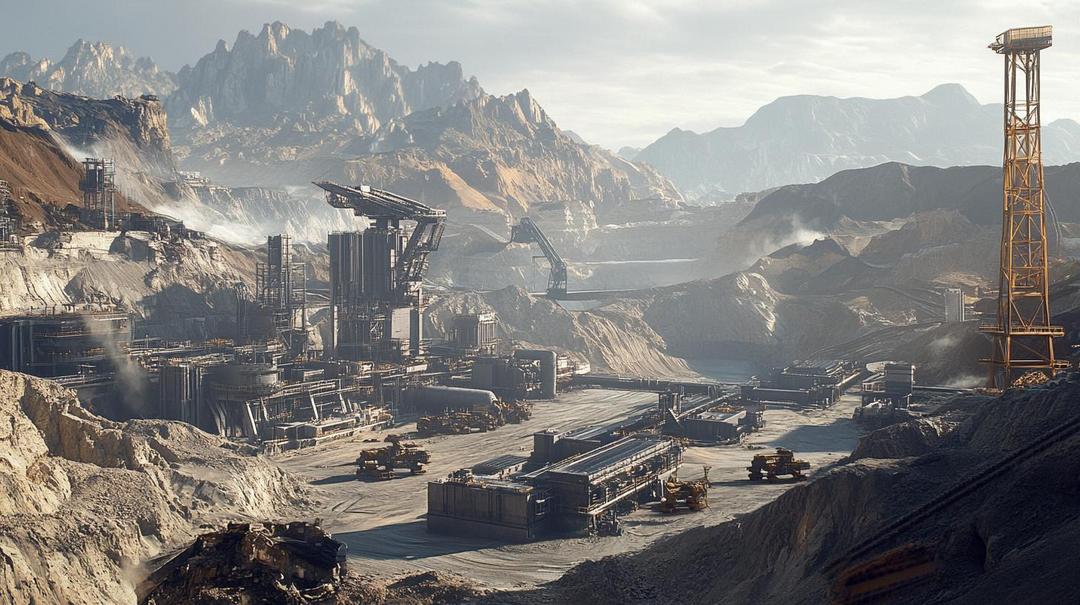Fun fact: Rare earths aren’t actually rare. But getting hold of them? That’s a different story! Rare earth elements (REEs) are the backbone of modern technology, spanning applications from wind turbines to electric vehicles and even national defense systems. Yet, the needed research surrounding these materials for better mining and processing isn’t just a science problem—it’s shaping global industries, environmental policies, and even geopolitics.
Let’s dive in.
What's Inside
What Is The Future of Rare Earths Research, and Why Is It So Important?
Rare earth elements (REEs) are a group of 17 metallic elements crucial to modern technology, divided into light and heavy rare earths. These elements are anything but rare, though their concentrated extraction remains challenging.
Critical Applications Driving Research
REEs play a pivotal role in numerous high-tech industries:
- Renewable energy technologies, including wind turbine generators
- Advanced electronics and smartphone components
- Defense systems and precision guidance technologies
- Electric vehicle battery production
- Advanced medical imaging equipment
Global Consumption Landscape
The demand for rare earths continues to surge dramatically:
- Annual global consumption has increased by 43% in the past decade
- The projected market value is expected to reach $18 billion by 2027
- Significant supply chain concentration, with China controlling approximately 80% of global production
Recent Breakthroughs in Rare Earths Research
Innovative Extraction Technologies
Researchers are developing groundbreaking approaches to rare earth extraction:
- Biomining techniques using specialized microorganisms
- Membrane-based separation technologies
- Ionic liquid extraction methods reducing environmental impact
- Carbon-neutral processing techniques
Recycling and Sustainability Advances
Critical developments in rare earth recycling include:
- E-waste processing technologies recover up to 95% of rare earth content
- Advanced magnetic separation techniques
- Chemical leaching processes with reduced environmental footprint
What Future Trends Will Shape Rare Earths Research?
Technological Integration
Emerging research trends demonstrate significant potential:
- Artificial intelligence-driven mineral exploration
- Machine learning algorithms optimizing extraction processes
- Autonomous mining technologies
- Predictive modeling for rare earth deposit identification
Emerging Exploration Frontiers
Researchers are expanding rare earth acquisition strategies:
- Deep-sea mining exploration
- Lunar and Martian rare earth extraction research
- Asteroid mining potential investigations
Environmental Challenges in Rare Earths Research
Sustainability Considerations
Critical environmental concerns include:
- High water consumption during extraction
- Chemical waste management
- Carbon emissions from processing
- Ecosystem disruption in mining regions
Green Mining Initiatives
Promising sustainable approaches:
- Phytomining (opens in a new tab) using specialized plants
- Renewable energy-powered extraction facilities
- Closed-loop processing systems
- Minimally invasive extraction techniques
Rare Earths and Geopolitics: The Research Race
Strategic Global Dynamics
Key geopolitical considerations:
- China’s dominant market position
- United States’ strategic decoupling efforts
- European Union’s critical raw materials strategy
- Emerging national security implications
Policy and Research Investments
Significant policy developments driving research:
- U.S. Inflation Reduction Act rare earth provisions
- European Union critical materials regulation
- International collaborative research programs
- National security-driven research funding
Conclusion
The future of Rare Earths research is not just a passing fad—it’s at the intersection of technology, sustainability, and geopolitics, shaping the future of critical industries. From groundbreaking lab discoveries to global sustainability challenges, this field holds immense potential for innovation—and challenges to overcome.
As we forge ahead, staying informed and investing in smarter research practices will be key to unlocking the full potential of rare earths. Want to stay updated on the newest discoveries in rare earths research? Sign up for our newsletter!
FAQs
What are rare earth elements, and why are they important?
Rare earth elements are a group of 17 chemically similar elements vital for manufacturing technologies like smartphones, electric cars, and renewable energy systems. Their unique properties (e.g., magnetic and conductive) enable these applications.
How is rare earth recycling contributing to the future of research?
Recycling rare earths from e-waste reduces environmental impact and dependence on traditional mining. Breakthroughs in efficient recovery methods are reshaping supply chains.
Are there alternative materials to replace rare earth elements?
Researchers are studying potential substitutes for rare earths in specific applications. For instance, advancements in permanent magnet technology may reduce rare earth dependency.
Which countries dominate rare earth production?
China currently dominates rare earth mining and processing, supplying over 60% of global production. The U.S. and Australia are investing heavily to reduce dependency.
What are the main environmental concerns in rare earth mining?
Mining rare earths can be energy-intensive and produce hazardous waste. Sustainable practices like green mining and recyclable solutions aim to mitigate these impacts.


Dustin
Driven by a fascination with rare earth elements and their role in powering modern tech and engineering marvels. A true car and tech enthusiast, he loves exploring how these hidden heroes fuel our most exciting innovations.
You Might Also Like…